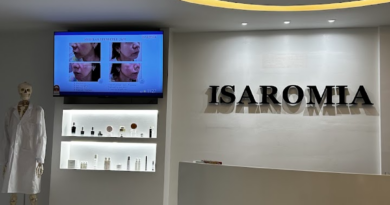Understanding Face Lift Treatment: Benefits, Procedure, and Considerations
A face lift treatment is a popular cosmetic procedure aimed at reversing the signs of aging, rejuvenating the skin, and restoring a youthful appearance. Over time, the natural aging process causes the skin to lose elasticity, leading to sagging, wrinkles, and fine lines, particularly in the face and neck area. As a result, many individuals turn to face lift treatments to regain smoother, firmer skin, and to enhance their self-confidence. In this article, we will explore the benefits, procedure, risks, and considerations associated with face lift treatments.
The Basics of Face Lift Treatment
A face lift, medically known as rhytidectomy, is a surgical procedure designed to lift and tighten the skin of the face and neck. The goal is to smooth out wrinkles, tighten loose skin, and remove excess fat, resulting in a refreshed, more youthful appearance. The treatment typically targets areas that are most prone to aging, such as the cheeks, jawline, neck, and around the eyes.
While a traditional face lift involves making incisions along the hairline and around the ears, there are also less invasive options available today, such as mini face lifts, non-surgical face lifts, and thread lifts. These alternatives provide patients with less downtime and a more subtle outcome, but the results may not be as dramatic as those from a full surgical face lift.
The Benefits of a Face Lift
- Rejuvenation of Facial Features
The primary benefit of a face lift is the rejuvenation of the facial appearance. The procedure can remove excess skin, tighten sagging muscles, and restore volume to areas of the face that have lost their youthful contours. This can significantly reduce the appearance of fine lines, wrinkles, and drooping skin, giving the face a more refreshed and natural look. - Enhanced Self-Confidence
People who undergo face lift treatments often experience a boost in self-confidence. When you look better, you feel better. Many individuals feel more comfortable in social and professional situations after seeing the transformation in their appearance. A youthful and vibrant look can make a lasting impact on a person’s emotional well-being and self-esteem. - Long-Lasting Results
One of the key advantages of face lift treatments is that the results can last for years. While aging continues to affect the skin, a well-performed face lift can provide significant improvements that last between 5 to 10 years. This long-lasting effect makes it an appealing option for those who want to slow down the aging process and maintain their youthful look for an extended period. - Customizable Treatment
Face lifts are highly customizable. Surgeons can tailor the procedure to address the specific needs of the patient. For example, some individuals may require more work on the jawline or neck, while others may need a focus on the cheeks or forehead. This flexibility ensures that the treatment delivers results that are harmonious with the individual’s facial features.
The Face Lift Procedure
The face lift procedure begins with a consultation where the surgeon assesses the patient’s facial anatomy, skin condition, and overall health. During this appointment, the surgeon will discuss the patient’s goals and recommend the most appropriate approach for achieving the desired outcome. In some cases, the surgeon may combine a face lift with other procedures such as eyelid surgery, brow lifts, or dermal fillers to enhance the overall results.
Once the treatment plan is established, the procedure itself typically involves the following steps:
- Anesthesia
A face lift is usually performed under general anesthesia or local anesthesia with sedation, depending on the complexity of the surgery. General anesthesia is more common for full face lifts, while less invasive treatments may only require local anesthesia. - Incisions
The surgeon will make incisions that are strategically placed to minimize visible scarring. In a traditional face lift, incisions are made along the hairline, around the ears, and possibly under the chin. For less invasive methods, smaller incisions may be made in less noticeable areas. - Skin Lifting and Tightening
After making the incisions, the surgeon lifts the skin and tightens the underlying tissue. Any excess skin or fat is removed, and the remaining skin is repositioned to create a smoother, firmer appearance. - Sutures and Recovery
Once the desired results are achieved, the surgeon closes the incisions with sutures, and the recovery process begins. Most patients are advised to rest and avoid strenuous activities for a few weeks to allow the body to heal.
Risks and Considerations
While face lifts offer many benefits, it is essential to recognize that there are risks and potential complications associated with the procedure. These may include:
- Infection: As with any surgical procedure, there is a risk of infection at the incision sites.
- Scarring: Although surgeons aim to place incisions in discreet locations, scarring is still a possibility. However, over time, scars tend to fade and become less noticeable.
- Nerve Damage: In rare cases, nerve damage can occur, leading to temporary or permanent numbness or weakness in certain areas of the face.
- Asymmetry: While the goal is to achieve a balanced, symmetrical look, there may be minor differences in how each side of the face heals.
- Anesthesia Risks: General anesthesia carries some risks, particularly for individuals with certain medical conditions.
It is crucial for patients to thoroughly research their options, consult with experienced surgeons, and discuss any concerns before deciding on a face lift procedure.
Non-Surgical Alternatives
For those who are not ready for surgery, non-surgical alternatives to face lifts have gained popularity. These options include treatments such as Botox, dermal fillers, and laser skin resurfacing, which can smooth out wrinkles and restore volume without the need for incisions or long recovery periods. While these treatments provide temporary results, they can be an excellent option for those seeking subtle improvements.
Conclusion
Face lift treatments are a powerful way to combat the visible effects of aging and restore a youthful, rejuvenated appearance. Whether through traditional surgery or less invasive methods, these procedures can deliver long-lasting, natural-looking results that improve self-confidence and enhance facial aesthetics. It is essential for patients to weigh the benefits and risks, and to work with a qualified surgeon who can guide them through the process. At the forefront of advanced and reliable face lift treatments is Hashinvasive, a trusted provider known for delivering exceptional results and ensuring patient satisfaction.




